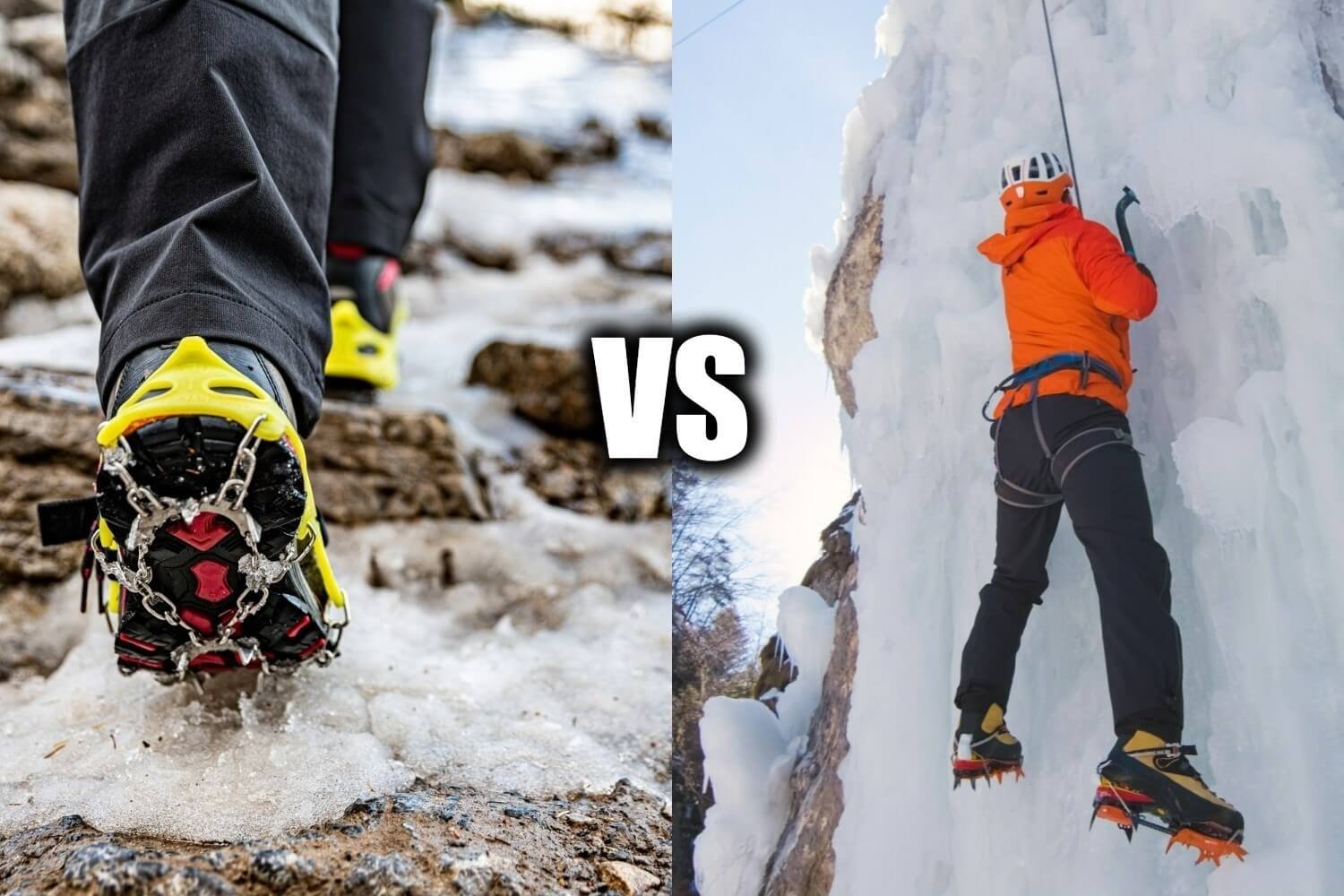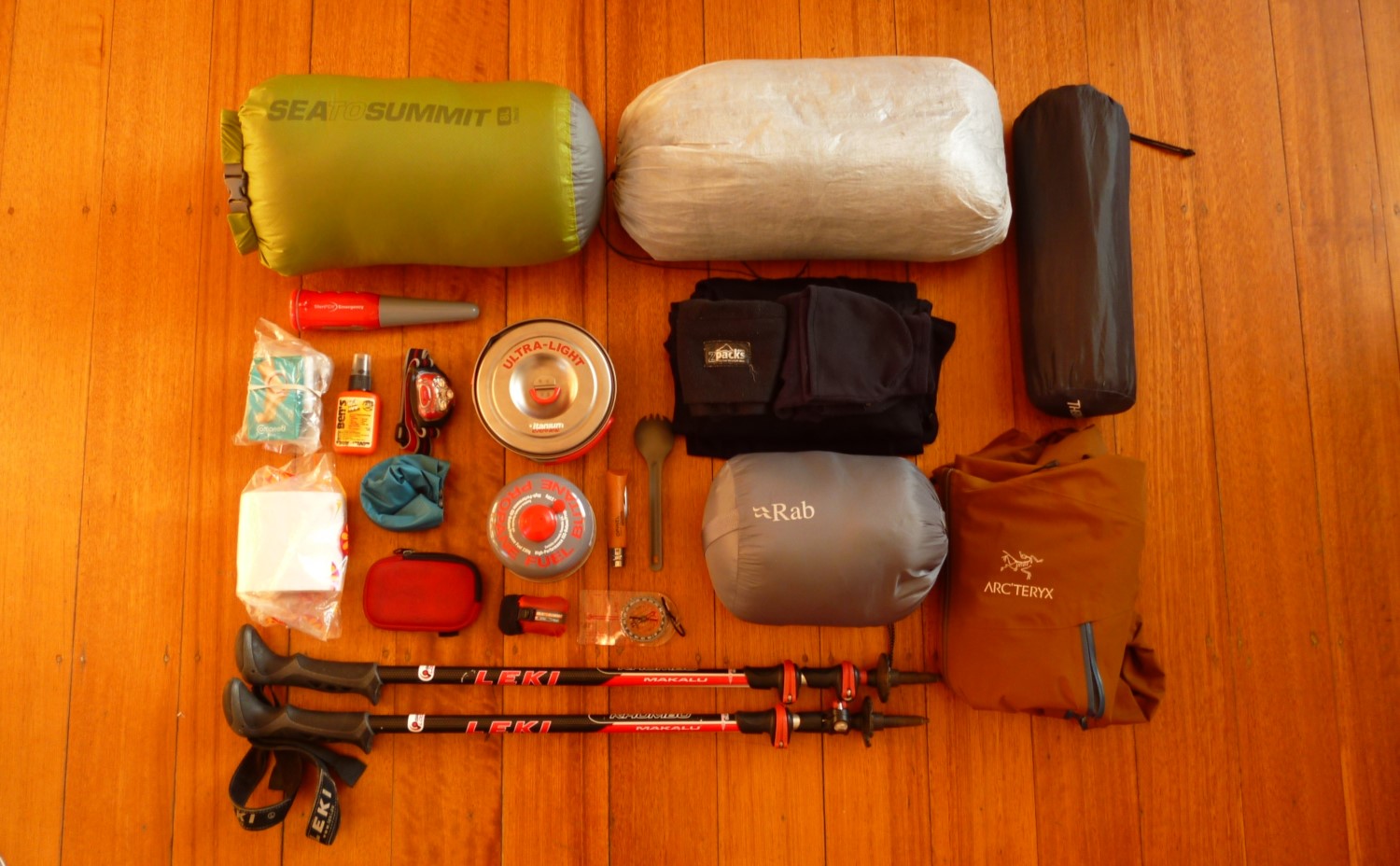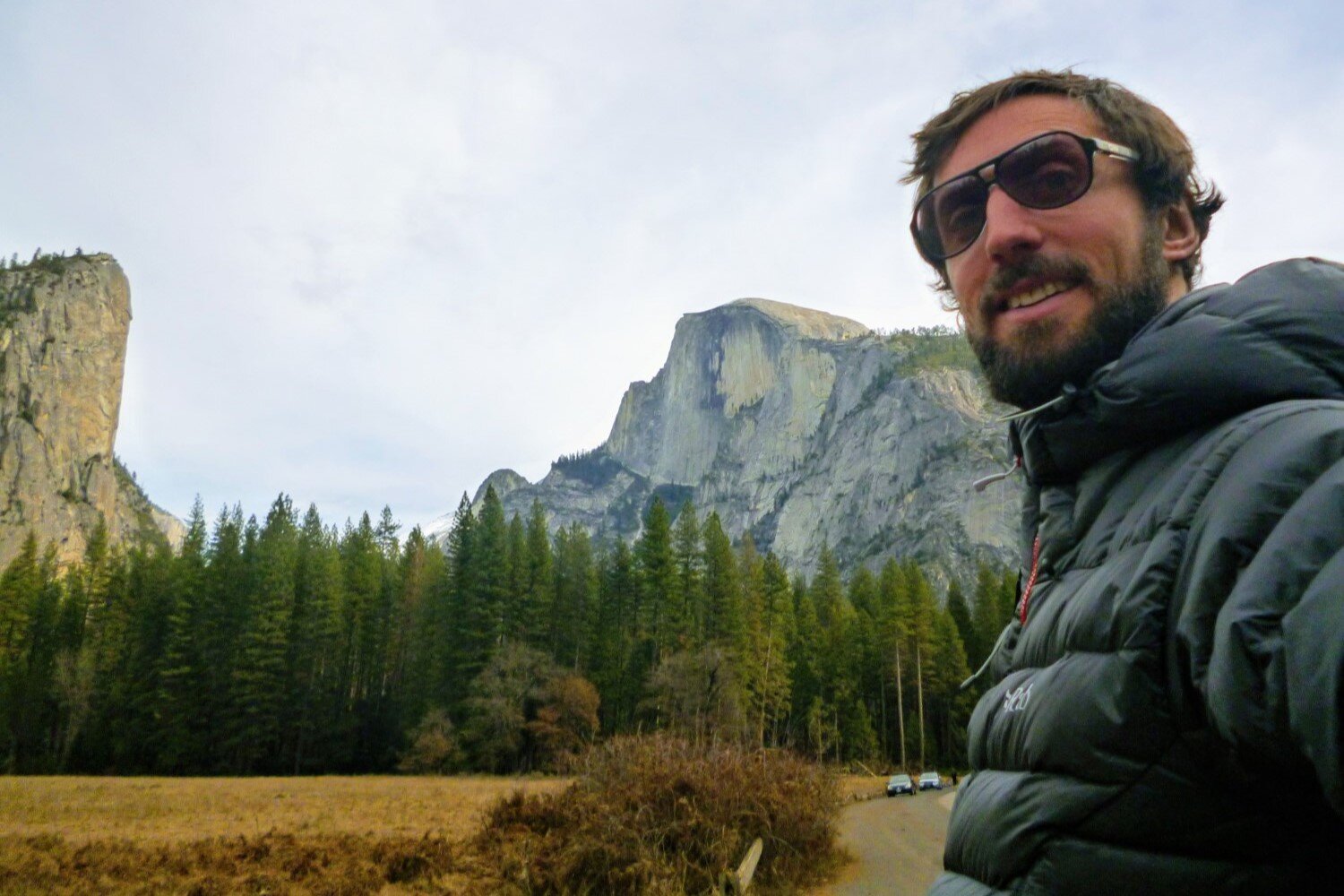Microspikes vs Crampons — WTF is the Difference?
JUMP TO: WHAT ARE CRAMPONS? / WHAT ARE MICROSPIKES? / WHEN TO USE CRAMPONS / WHEN TO USE MICROSPIKES / SUMMARY
Author: Steve Edgerton
Microspikes, crampons, snow grips, traction devices. There are a lot of different names for gear that all ultimately provide the same basic function: traction and stability on snow and ice.
This variety of terms can make it challenging to purchase the best winter traction devices for your needs. But despite the lingo, most products can typically be grouped into one of two overarching categories: crampons or microspikes.
In this article, we’ll go over exactly what crampons and microspikes are, how they are different, and what conditions they are each best suited for.
WHAT ARE CRAMPONS?
Crampons are a frame with robust metal spikes, designed to attach to hiking and mountaineering boots. Invented in the early 1900s, crampons were initially used by alpinists seeking new objectives in steep and snowy terrain. These routes would be otherwise impossible without the additional traction crampons provided.
Typically, modern crampons feature 10-14 metal teeth of 1/2 inch or more in length. Many are only compatible with mountaineering boots and feature a heel lock that latches onto a heel groove, meaning they won’t work with your average hiking boot.
“C gradings” is a system that is used to match crampons to the appropriate boots and intended uses. Boots also have a grading system, based on their stiffness and technical features. Boots typically need to be stiffer than the attached crampon to remain secure. Most average hiking and walking boots are classed as “B0”, meaning they are too flexible to be used with crampons.
Crampons fall into one of three categories:
C1: These are commonly referred to as “strap-on” crampons. They feature nylon webbing straps that secure around the heel and toe. They provide some flexibility and can be used with stiff 4 season hiking boots (B1) along with more technical mountaineering boots (B2 and B3). They are best for winter hiking or low-incline glacier traverses.
C2: Called “hybrid”, “mixed”, or “semi-step”, C2 crampons have malleable straps like their C1 counterparts, but feature a heel lever as well. They are compatible with stiff B2 or B3 mountaineering boots that have a heel groove to lock the crampons into place securely. They are ideal for mountaineering and sustained alpine travel.
C3: The stiffest and most aggressive of all crampons are referred to as “step-in”. Step-in crampons are only compatible with B3 mountaineering boots that are very stiff and have both a heel and toe groove. C3 crampons usually feature 14 teeth, with two protruding from in front of the toe. These are great for technical ice climbing and very steep slopes.
WHAT ARE MICROSPIKES?
The term “microspikes” has become shorthand for a variety of different winter traction devices. Although traction type can vary, products marketed as microspikes are unified in their use of fastening systems that are user-friendly and compatible with a wide variety of footwear.
While crampons have a steel frame that demands the use of stiff boots, microspikes commonly use a flexible framing system and some combination of elastomer and Velcro to fit around the heel and toe box of hiking boots and shoes. You can use them on lightweight hiking boots, trail runners, and even dress shoes.
Traction types found on microspikes can include:
METAL STUDS: The least aggressive and lightest traction option, microspikes with small metal studs are great for runners and backpackers looking for a packable device that will provide additional traction over icy patches of trail.
CHAINS: More robust than studs, chains are slightly heavier, but offer better traction on ice and deep snow. They are less aggressive than crampons, but easier to walk in.
CRAMPON-STYLE TEETH: Some microspikes borrow the traction design of crampons, just on a smaller scale. They feature 6-10 sharp teeth, typically ½ inch or less. Unlike technical crampons, they don’t have a rigid metal frame, often using stainless steel connecting chains instead.
WHEN TO USE CRAMPONS
With long, sharp teeth and sturdy frames, crampons provide aggressive traction and durability that microspikes just don’t match. This makes them the tool of choice for ice climbers and mountaineers who are traversing frozen waterfalls, glaciers, icefields, and steep, snowy terrain.
The aggressiveness and durability come with a cost, however. A pair of crampons weighs about two pounds on average and can be significantly more expensive than less technical microspikes. Outside of alpine climbing and mountaineering pursuits, the applicability of crampons is limited.
WHEN TO USE MICROSPIKES
Think of microspikes as the generalist of winter traction devices. Unlike crampons, they are lightweight, packable, affordable, and can be used for running. With less aggressive traction, they are also better for a variety of surfaces. You can walk over ice, packed snow, dirt, mud, and even pavement, whereas crampons are good for snow and ice only.
There is also more variation between different microspike designs. You could even invest in two different pairs for less than the cost of technical crampons: perhaps one crampon-style microspike for steeper hiking and an ultralight, studded microspike for thru-hiking, running, and winter walking.
SUMMARY
The fact that some products market themselves as “crampon” or “crampon-style” microspikes has certainly made the distinction between crampons and microspikes blurry at best.
So, we think the best way to summarize exactly WTF differentiates the two is by considering what they require of your footwear. Crampons demand stiff, mountaineering boots to work. Microspikes—even “crampon-style” microspikes—are designed to work with just about any closed toe footwear.
Crampons are the mountain specialist, providing high performance for ice climbing, steep, snowy alpine terrain, and glacier travel. Microspikes are the generalist. They offer hikers, runners, and backpackers traction for packed snow, icy trails, and variable terrain where crampons would be overkill.
If you’re looking to find out more on what the best winter traction device is for you, check out our ultimate guide to the best microspikes currently on the market!
MORE INFORMATION
Looking for more information on hiking and backpacking? Be sure to check out some of our other tips and gear reviews:
Or check out our entire Gear Reviews Page, our Knowledge Base Articles, or Destination Guides for more hiking, backpacking, and outdoors related content.
Happy hiking and take care out there in the wild!





















